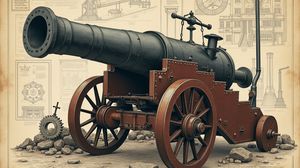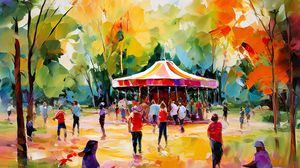
Woolwich Arsenal, located in the Royal Borough of Greenwich, London, is an area steeped in rich industrial history. Originally established in 1671, the Arsenal transformed Woolwich into one of the foremost military establishments in Britain. This historic location played a crucial role in the production and storage of weaponry and munitions for the British armed forces. Its legacy is still palpable in the architecture and layout of the locality.
One of the fascinating aspects of Woolwich Arsenal is its reinvention from a military hub to a vibrant riverside development. The remnants of its military past blend seamlessly with modern residential areas and cultural spaces, offering a unique glimpse into both history and contemporary urban living. The preserved buildings and structures add a distinct character to the neighborhood.
History buffs would find it intriguing that Woolwich Arsenal was at the forefront during the Napoleonic Wars and World War I, when it was responsible for supplying a large portion of the weaponry used by the British forces. This significant role cemented Woolwich's status in British military history, with the site now serving as an evocative reminder of its crucial contributions to national defense.
Woolwich Arsenal is renowned for its Grand Store, a building that reflects the classic military architecture of the time. The sheer scale and design of such structures are a testament to the monumental industrial operations that once took place here. Today, these structures have been repurposed, housing art galleries, museums, and residential spaces that invite visitors to explore and appreciate the architectural heritage.
An intriguing fact about Woolwich Arsenal is that it was closely linked to the famous football club, Arsenal FC. Originally formed by munitions workers from the area in 1886, the team was initially named "Dial Square," symbolizing the heart of Woolwich's industrial activity. This historical connection is proudly acknowledged by the club, which still bears the name today.
Another interesting point is the area's notable use in contemporary film and television productions. Its blend of historical and modern settings provides a versatile backdrop, making it a favored location for filmmakers seeking authentic London landscapes. This connection to the arts ties Woolwich Arsenal to both cultural history and contemporary creative endeavors.

Making the Most of Your Visit:
If you're visiting Woolwich Arsenal, plan to start your journey at the Royal Arsenal Gatehouse. This iconic structure marks the heart of the area and sets the tone for your exploration of this historic site.
Don't miss the Thames Path walk. It's a lovely riverside route that offers a mix of historical and modern sights. Plus, it provides a beautiful view of the Thames Barrier and a glimpse of London from a different perspective.
Take a moment to appreciate the public art installations scattered around the area. They highlight Woolwich Arsenal's cultural significance and are a testament to the ongoing revitalization of the neighborhood.
If you're around during the weekend, check out the Royal Arsenal Farmers' Market, held on the second and last Saturday of the month. It's a great way to sample local produce and soak up the community atmosphere.
End your visit with a stop at one of the local pubs or cafes. Many of these venues have outdoor seating with views of the river or unique settings in converted historic buildings, offering a perfect spot to relax and reflect on your visit.

Visiting Times & Costs:
Woolwich Arsenal is largely open to the public and can be visited throughout the year. Generally, there are no specific opening or closing times for exploring the public spaces, as the area itself is a vibrant neighborhood with both public and private spaces.
Many parts of the Woolwich Arsenal, such as the Thames Path and public art installations, can be freely accessed by the public. Visitors can enjoy these historic and cultural features without any cost.
However, attractions like galleries, museums, and certain exhibitions within Woolwich Arsenal may have varied opening times and could charge an entrance fee. It is advisable to check individual attraction details for specific information on visiting hours and ticket prices.
In terms of accessibility, Woolwich Arsenal is generally accessible with paved paths and ramps. However, some historic buildings might have limited access for those with mobility challenges due to their original design and construction. Efforts have been made to improve accessibility, so it's recommended to inquire ahead if specific access needs are required.

Address & Map:

Nearby:










